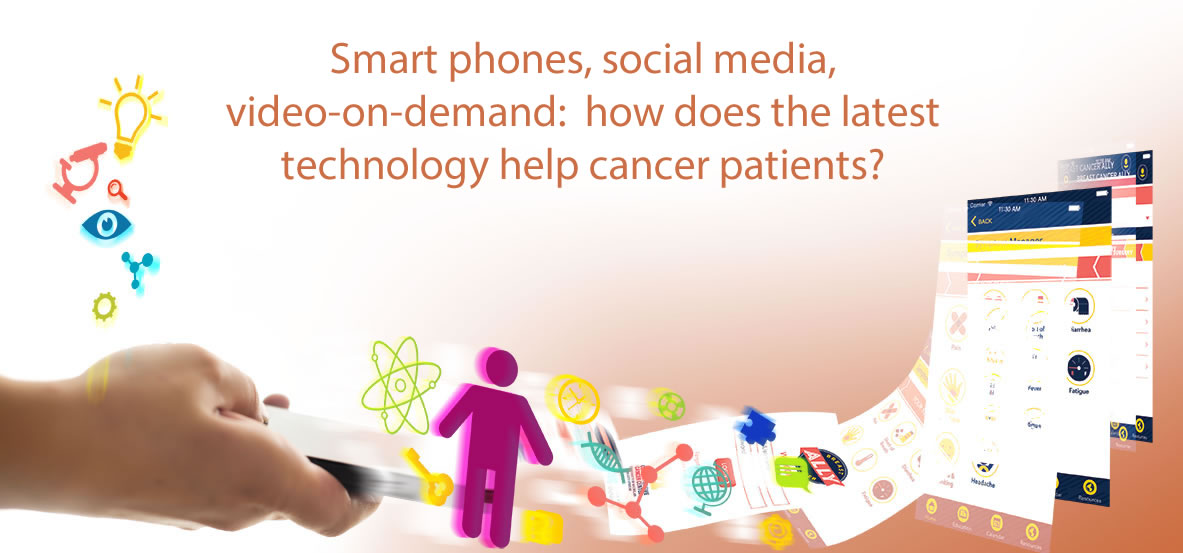Internet Technology Meets Cancer Care

How can the technology that connects us with information -- and each other -- transform the patient experience?
Smart phone applications, social media, video-on-demand -- just when we embrace the latest advance in information technology (IT), another promises to make us smarter, more organized or better connected. Change happens just as swiftly in cancer care, bringing us not only advances in screening and treatment, but more information, more options, and all too often, more questions.
Where do the two roads meet? We asked Larry An, M.D., director of the Center for Health Communications Research at the University of Michigan, to help us understand how IT improves cancer care. The center includes behavioral scientists, health counselors, and software and media professionals who, in partnership with doctors and researchers from across the university, develop and test ways to help people access information and make more informed health decisions.
Q. How would you describe the Center for Health Communications Research? A high tech start-up?
Although we strive to be as innovative as any Silicon Valley start-up, we're different in some important ways. Here's how the tech world often works: Someone invents a cool new technology -- like the smart phone or the tablet computer -- then lots of people jump in to find new uses for it. While great things can come from that model, we take a complementary approach. Rather than starting with technology, we start with the patient, try to understand his or her experience, then find creative ways to improve that experience.
A term we use a lot to describe ourselves is "tech agnostic," meaning that we don't believe there is any one technology solution for every communication problem. While some people really like to use mobile apps, others may prefer their desktop or laptop computer, the telephone or even printed materials. Our job is to figure out how to deliver the information people need to deal with the health challenges they're facing using the tools that fit best into their lives.
Q. How can technology help when it comes to cancer?
We're developing tools to help patients evaluate their options to make better-informed treatment decisions. We're helping doctors convey and patients absorb complex information. We're empowering patients to monitor and address symptoms and side effects. And we're encouraging people to take lifesaving steps to prevent cancer, like quitting smoking.
Q. Can you describe some of your key projects?
Many of our cancer projects are rooted in one word that patients and families use to describe their experience: overwhelming. On top of the anxiety that comes with every cancer diagnosis, patients are also confronted with an ocean of information, much of it in a language they don't speak. It's hard to make informed decisions or ask meaningful questions when you’re drowning in facts and figures.
Projects like our new mobile app, Breast Cancer Ally, help patients navigate their cancer care. It keeps track of where the patient is in the process, anticipating and answering questions every step of the way. Initially, it focuses on educating about treatment options; then it offers specific tips to prepare for treatments; and later, it provides instructions, reminders and logs for managing symptoms and side effects. The app doesn't replace the patient’s relationship with the care team, it enhances it. The physician who leads the project, Dr. Michael Sabel, calls it "a doctor on your shoulder."
Another overwhelming reality of cancer is the clinic visit. With so much to cover during that valuable one-on-one time with the doctor, patients and caregivers often have trouble recalling it all afterward, even when they take notes. A new project called MiVideo provides patients with personalized video summaries recorded by their doctors after clinic appointments. Patients can access and even share their videos with others via a secure website. With the help of Dr. John Krauss, we’ve tested the program with colon cancer patients and, based on very positive feedback, MiVideo is now an option for pancreatic cancer patients too.
Q. What is the next big trend in cancer communications?
I think it’s even more personalization. The science is moving toward relying on genetic and genomic data to profile an individual's cancer and tailor one-of-a-kind treatments. That genetic information creates another wave in that patient’s ocean of information. At the same time, many of the resulting personalized treatments are oral medications the patient takes at home, which means fewer clinic visits. While that can be a big plus for patients, it leaves fewer opportunities for patients and providers to connect face-to-face.
The more we personalize treatment, the more we'll need the "personalized information prescriptions" we're developing. Technology can help us help patients focus on the right information, navigate their treatment, address symptoms and side effects, and dialog with their care teams. We're excited and honored to be part of that future.
Learn more about the Center for Health Communications Research and other technological advances at the U-M Rogel Cancer Center:
- Center for Health Communications Research
- U-M Skin Check App
- Breast Ally App (introductory video) - patients can download it at iTunes
- A Look into the Future: Using technology to record and share patient appointment summaries
Continue reading the Fall, 2015 issue of Thrive.
